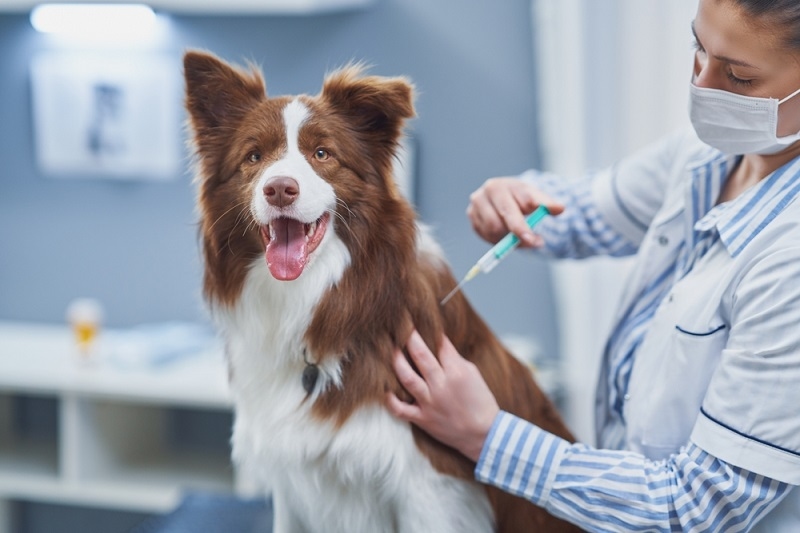
Imagine when your dog is walking on a warm sunny morning with tall grasses and the air feels fresh. However, tiny ticks can be hidden in that grass, a small bite from such a parasite can change everything for your four legged friend. This is exactly how babesiosis in dogs actually happen.
This illness can significantly damage the red blood cells in your dog which can make them very weak. However, there are various pet owners who confuse this issue with other problems because the signs are not always similar. Thus, it is essential for you to learn about babesiosis in dogs to make sure they are safe and protected.
In this blog, you will learn about the different symptoms, causes, treatment, and prevention in detail. It will help you as a dog owner to notice the warning signs and take action early.
Babesiosis in dogs is caused by tiny parasites called Babesia. These parasites live inside red blood cells and slowly destroy them. As blood cells break down, the dog loses strength and may develop serious health problems.
The most common way a dog can get babesiosis is because of the tick bite. In simple words, when a tick that carries Babesia sits on a dog and bites it, the parasite enters their body. Apart from this, wounds and cuts can also be a reason behind the spread of this disease.
Dogs who spend a lot of time outside are more prone to suffer from this illness. However, one thing that you must keep in mind is that dogs that live in warm areas have a higher chance of suffering from this disease.
Top Pick: Top Signs of Illness in Dogs: Early Warning Symptoms
The symptoms of babesiosis in dogs often appear slowly at first. Many owners may think their dog is just tired or stressed. But as the infection grows, the signs become stronger and more concerning.
If a dog shows more than one of these signs, veterinary care should be sought immediately. Quick action gives the best chance of recovery.
The main source of babesiosis in dogs is the bite of an infected tick. Ticks live in grass, bushes, and wooded areas, waiting to attach to animals. Once they bite, the parasite enters the blood and begins spreading.
Dogs that spend time outdoors without tick protection are more likely to get infected. Weaker immune systems can also make the illness more serious. In rare situations, babesiosis can spread through wounds or shared blood.
Understanding how dogs get infected helps owners take simple steps to reduce the risk.
Because the symptoms are similar to other diseases, proper diagnosis is very important. Veterinarians use different tests to confirm whether babesiosis is the cause.
These tests help confirm babesiosis in dogs and guide the right treatment plan.

Taking early actions are essential for the treatment of babesiosis in dogs. The longer treatment is delayed, the more dangerous the illness becomes.
You have to give your dog the special medicines in order to target and destroy the parasites.
Make sure your dog consumes enough fluids as it helps in controlling the fever and keeps the dog stable.
If the disease has reached a severe stage, it can be helpful to give them new blood for replacing destroyed cells.
It is vital for your dog to get proper rest, try to keep the place calm and silent to make sure they recovery perfectly.
Once your dog recovers, make sure that you use tick protection to stop reinfection.
Babesiosis treatment in dogs can take time, but most dogs recover well with proper care.
Must Read: Learn Food Allergy Symptoms in Dogs and How to Spot Them
Prevention is always better than cure, especially for illnesses spread by ticks. Simple daily habits can lower the risk of babesiosis in dogs.
With these steps, owners can greatly reduce the chances of babesiosis in dogs.
The outcome of babesiosis depends on how quickly treatment begins. Dogs treated early usually recover fully within a few weeks.
Some dogs may continue carrying small amounts of the parasite without showing signs. These dogs need monitoring because stress or illness can trigger symptoms again.
When treated properly, most dogs return to their normal energy and lifestyle. The key is noticing symptoms early and seeking treatment without delay.
Dogs recovering from babesiosis need gentle care and close attention. Owners play a major role in helping their pets heal and stay safe.
With patience and care, most dogs return to healthy, active lives after babesiosis.
Babesiosis in dogs is a serious illness, but it can be managed with awareness and quick treatment. The symptoms of babesiosis in dogs, like pale gums, fever, and weakness, should never be ignored. With proper babesiosis treatment in dogs, most pets recover well and return to normal life.
Prevention remains the best protection. Tick control, regular checks, and early action make all the difference. By staying alert, owners can help their dogs live long, healthy, and happy lives free from babesiosis.
This content was created by AI